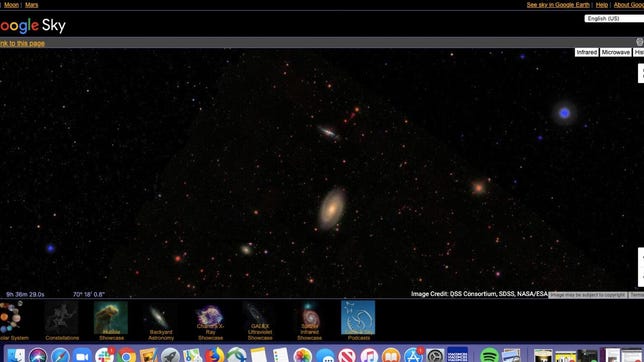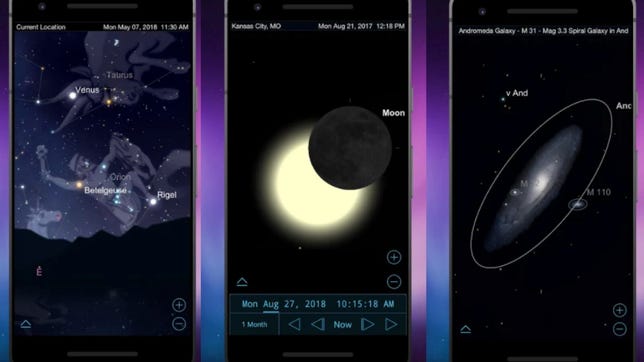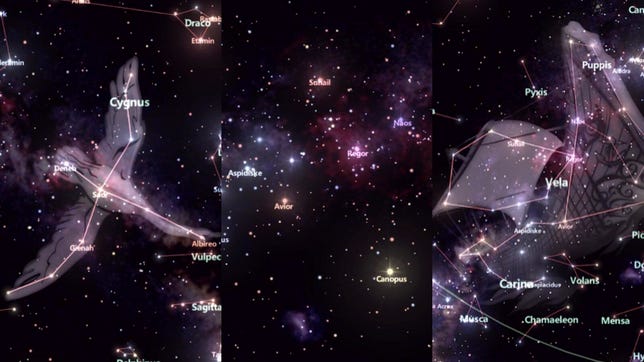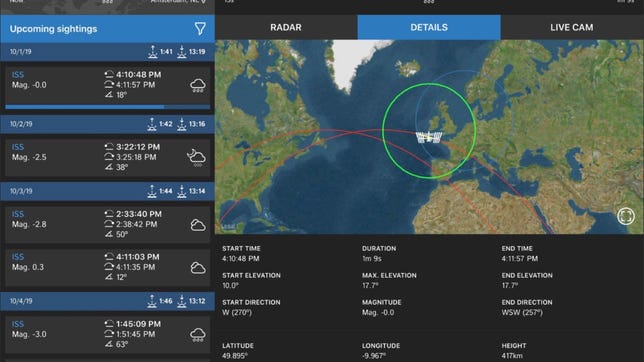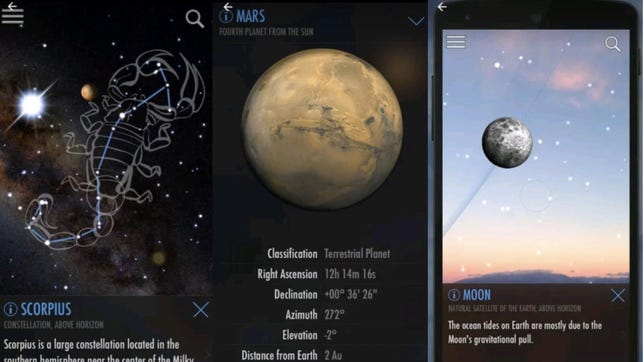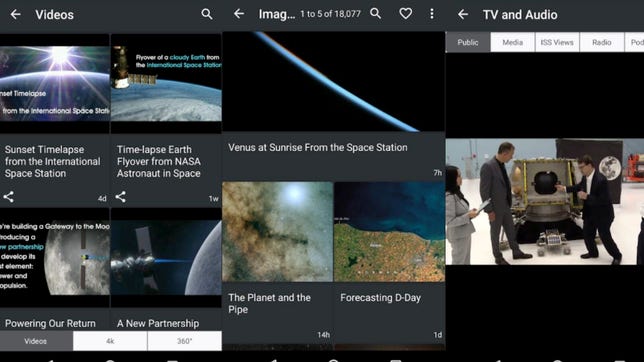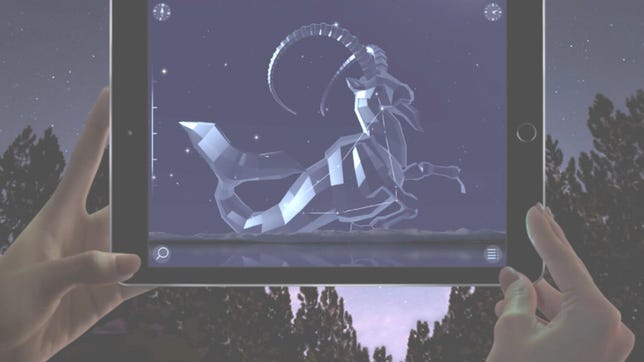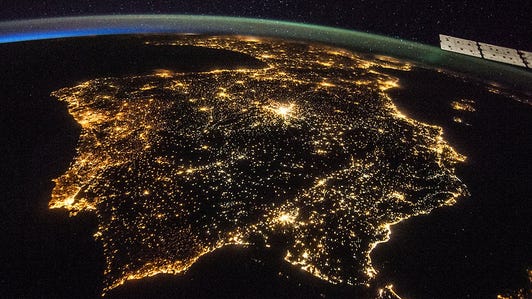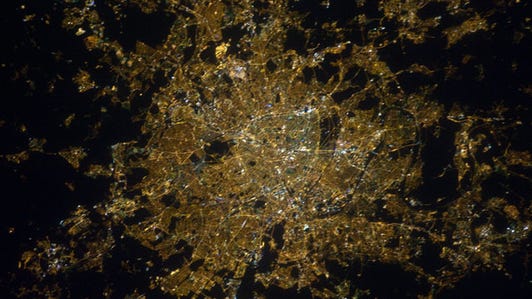Technologies
Try these stargazing apps to spot constellations and more.
These astronomical maps will help you spot planets, stars and constellations in the night sky.

Stargazing with a friend or partner is a relaxing nighttime activity. But if you’re wanting to relax under dark skies and look at the stars, how will you know where to look? Or what you’re seeing? If you want to check out the celestial bodies and star clusters visible in a clear night sky, you should consider downloading a stargazing app. The best stargazing apps can give you a better map of the sky and more details about what you’re seeing.
My husband and I are far enough out in the country to see stars, but we haven’t completely escaped the city’s light pollution. Every so often before we turn in for the night, we’ll step out onto the back porch if the sky is clear, and look up. We’ve seen a shockingly bright Venus, the ISS streak by and a few shooting stars — thanks in part to help from some astronomy apps. If you want to take a look at some of the best stargazing app options, read on. These apps should help you spot planets, stars and constellations — and some of them have a free version.
Read more: Best Weather Apps of 2023
Google Sky lets you explore the reaches of space through the «eyes» of the Hubble Space Telescope, the Sloan Digital Sky Survey and the Digitized Sky Survey. You can explore the wealth of information available free on mobile or desktop.
Click through the tray at the bottom of the screen to learn more about the solar system, constellations, galaxies and nebulae, views of the universe in X-ray, ultraviolet and infrared. You can also use sliding bars to see drawings of the sky by Giovanni Maria Cassini.
Plus, find where the planets are in the sky at a given time by typing the name of a planet in the search box.
The SkySafari astronomy app, which starts at $2 on iOS and free on Android, lets you hold your phone to the sky to identify planets, constellations, stars and satellites. You can also use the app to see what the sky might’ve looked like thousands of years ago, or what it will look like in the future.
Simulate past meteor showers, approaching comets and celestial events, like eclipses. SkySafari also has a constellation illustration overlay feature in case you can’t quite visualize the lion or bear that everyone else claims to see. The app also offers history, mythology and science information to accompany the images.
If you’re not sure where to get started, you can tap Tonight’s Best in the app to check out which object in the sky you could get the best look at.
The Star Tracker app works on iOS (lite) and Android to show you 88 constellations, over 8,000 and deep-sky objects, and the sun, moon and planets, all in real time. The app uses a 3D compass in AR mode that indicates the position of objects you’ve searched for. Think of it as a mobile planetarium.
To enhance constellations, Star Tracker has a graphics feature for the 12 zodiac signs and six famous deep-sky objects.
The app is free, but there’s a full version with more features for $3 and a no ads version for $1. In addition, Star Tracker Pro offers a Time Machine feature and night mode.
The International Space Station (ISS) app, available free on iOS and Android, doesn’t technically show you stars, but you can check out planets and the ISS itself. The app tracks where the in-space laboratory is currently located above the world at any given time.
Once you plug in your location — the only permission the app asks for — it can tell you how often you can expect to see the ISS in the sky. For example, residents of Louisville, Kentucky will typically be able to see the ISS between about 7:57 p.m. and 9:37 p.m. each night for about 30 seconds to a minute and a half. It’s a fleeting window — the ISS is traveling at about 17,100 miles per hour.
The app also keeps track of how long until the ISS will pass over your location again, and how long it’ll be visible. On average, it looks like the ISS is visible in a given area one to two times per day over the course of a week.
The Skyview app is $3 on iOS and $2 on Android, but both platforms have a free lite version. To use Skyview, just point your device at the sky and you can get started identifying galaxies, stars, constellations, planets — even the International Space Station. The app has night mode and an AR feature, so you can use it comfortably any time.
The app’s Sky Path’s feature lets you track objects in space to see exact locations at any date and time. In addition, Skyview has a time travel option to observe what the sky looked like in the past and might look like in the future.
No at-home space adventure is complete without the free official NASA app, which you can download for iOS or Android. Although technically you can’t use the app for stargazing in the same vein as some of the others on this list, you can still get up close and personal with space.
Check out a photo library with thousands of images constantly being updated and watch live NASA TV. In addition, the app has on-demand videos from around the agency and live streaming from the High-Definition Earth Viewing experiment on the ISS.
The app also keeps you in the know about NASA missions, launch information, upcoming sightings, news and tweets from the agency.
Star Walk 2, $3 for iOS and free for Android with in-app purchases, uses your phone’s sensors and GPS to show you a map of the night sky in real time, pinpointing the location of stars, planets, constellations, comets, the ISS and satellites.
Like SkySafari, you can tap Visible Tonight if you’re not sure where to start. The feature will tell you all upcoming astronomical events and celestial objects visible for your location. The What’s New section will also keep you posted on upcoming events. You can also view the astronomy calendar or tap the clock-face icon to select any date and time and watch the sky of different periods.
More for skywatchers
- NASA’s Incredible New Moon Map Will Serve as Blueprint for Human Missions
- Astronomers Discover Oldest Disk Galaxy Ever Hiding Deep in the Cosmos
- Scientists Spot ‘One in a Million’ Super-Earth
- Weird ‘Cotton Candy’ Planets Might Be Rocking Rings, Scientists Suggest
- Strange, Giant Exoplanet Could Be the Best Place to Look for Livable Exomoons
- Astronomers Watch Star Dance With a Black Hole, Proving Einstein Right (Again)
- 59 Weird Objects Seen on Mars, Explained
- A Giant Comet Spotted in 2017 Is Still Heading Toward Earth
- Cosmic Dead Ringers: 27 Super Strange-Looking Space Objects
- Astronomers Get First Look at a Baby Planet Being Born
Technologies
The Most Exciting Video Game Rumors and Leaks Ahead of 2026
Technologies
Today’s NYT Mini Crossword Answers for Wednesday, Dec. 17
Here are the answers for The New York Times Mini Crossword for Dec. 17.

Looking for the most recent Mini Crossword answer? Click here for today’s Mini Crossword hints, as well as our daily answers and hints for The New York Times Wordle, Strands, Connections and Connections: Sports Edition puzzles.
Need some help with today’s Mini Crossword? Read on. And if you could use some hints and guidance for daily solving, check out our Mini Crossword tips.
If you’re looking for today’s Wordle, Connections, Connections: Sports Edition and Strands answers, you can visit CNET’s NYT puzzle hints page.
Read more: Tips and Tricks for Solving The New York Times Mini Crossword
Let’s get to those Mini Crossword clues and answers.
Mini across clues and answers
1A clue: Nod (off)
Answer: DOZE
5A clue: Naval submarine in W.W. II
Answer: UBOAT
7A clue: Tricky thing to do on a busy highway
Answer: MERGE
8A clue: Heat-resistant glassware for cooking
Answer: PYREX
9A clue: Put into groups
Answer: SORT
Mini down clues and answers
1D clue: Break up with
Answer: DUMP
2D clue: Falls in line, so to speak
Answer: OBEYS
3D clue: Legendary vigilante who cuts a «Z» with his sword
Answer: ZORRO
4D clue: Rarin’ to go
Answer: EAGER
6D clue: Common reminder for an upcoming appointment
Answer: TEXT
Don’t miss any of our unbiased tech content and lab-based reviews. Add CNET as a preferred Google source.
Technologies
You Can Watch an Exclusive Avatar: Fire and Ash Scene on TikTok Right Now
Disney and TikTok partner on an immersive content hub for James Cameron’s latest movie about the alien Na’vi.
If you’re not quite ready to head to the theater to watch Avatar: Fire and Ash, an exclusive scene preview might sell you on the visual spectacle. As part of a new collaboration with the social media giant, Disney is posting snippets of its new movie to its TikTok account.
This scene isn’t part of any trailer and won’t be posted to other social media accounts, making TikTok the only place you can view it — unless you buy a movie ticket. A first look at the new movie’s scenes isn’t the only Avatar-related bonus on the social media platform right now, either. TikTok has partnered with the house of mouse to bring an entire «immersive content hub» to the app.
A special section of TikTok includes quizzes and educational videos that explore the alien world of Pandora shown off in the movies. On TikTok, you can take a personality quiz to find out what Na’vi clan you most closely align with and unlock a special profile picture border to use on your account.
Science and fiction blend together with a series of videos from real doctors who explain the basis for some of Avatar’s world-building. If you want to learn about exoplanets or how realistic the anatomy of the movie’s alien animals is, these videos will feed your brain while still providing entertainment value.
Perhaps the most enticing part of Disney’s latest social media collaboration is the opportunity for fans to win prizes and trips. TikTok creators who make edits with the #TikTokAvatarContest hashtag are entered into a competition to win Avatar merchandise. The biggest winners will be able to take a trip to visual effects studio Wētā Workshop in New Zealand or visit Avatar director James Cameron’s Lightstorm Entertainment Studio in Los Angeles.
Avatar: Fire and Ash is the third installment in director Cameron’s cinematic passion project. While the first Avatar movie was released in 2009, Cameron didn’t release another entry in the franchise until 2022. In total, there is a five-movie arc planned for the indigo alien Na’vi on the moon of Pandora.
The Avatar movies are known for pushing the boundaries of CGI visual effects in cinema. They are also historically big winners at the box office: the original Avatar is the highest-grossing film of all time, earning $2.9 billion across its theatrical releases. Its sequel, Avatar: The Way of Water, is the third-highest-grossing film of all time, trailing Avengers: Endgame. You can stream those movies on Disney Plus.
It remains to be seen whether Avatar: Fire and Ash will financially live up to its predecessors. The film currently has mixed reviews from critics on Rotten Tomatoes.
-

 Technologies3 года ago
Technologies3 года agoTech Companies Need to Be Held Accountable for Security, Experts Say
-

 Technologies3 года ago
Technologies3 года agoBest Handheld Game Console in 2023
-

 Technologies3 года ago
Technologies3 года agoTighten Up Your VR Game With the Best Head Straps for Quest 2
-

 Technologies4 года ago
Technologies4 года agoBlack Friday 2021: The best deals on TVs, headphones, kitchenware, and more
-

 Technologies4 года ago
Technologies4 года agoVerum, Wickr and Threema: next generation secured messengers
-

 Technologies4 года ago
Technologies4 года agoGoogle to require vaccinations as Silicon Valley rethinks return-to-office policies
-

 Technologies4 года ago
Technologies4 года agoOlivia Harlan Dekker for Verum Messenger
-

 Technologies4 года ago
Technologies4 года agoiPhone 13 event: How to watch Apple’s big announcement tomorrow

